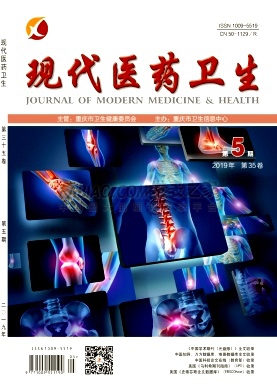C ompared to the working place,the home environment usually gives the expression of relaxation and recreation.Besides the safe and comfort of life,healthcare is another issue that must be considered.Aremote healthcare system is to deliver 24 hours service into the house environment,provide complete medical records,and give disease warning and Point-of-care(POC)aid.This is the main reason to extend a telecare system to home. 1 Healthcare Body Area Network (BAN) 1.1 Telecare The telecare is part of the scope of remote medicine that provides instant POC service.The significance of this service became obvious.The telecare system provides possibility for the people to quickly recognize symptoms of some acute diseases such as coronary heart disease or intracerebral hemorrhage,and alert the patient and healthcare providers in advance.It can even offer instant medical aid in case of emergency.Furthermore,for chronic diseases,for example,diabetes or dyscoimesis,the telecare system is able to monitor a patient,determine the pathogeny,observe the progress of medical treatment and give instruction for treatment. The telecare has passed several stages as described below. (1)Non-realtime monitoring:A patient carries a 24 hours Electrocardiograph(ECG)to record variation of heart beat rate for a longer period.Because there is no communication component,someone has to take the ECG record to a hospital for interpretation,or use a home transmission device to send it.Hence,the non-realtime monitoring is helpless in case of emergency. (2)Realtime monitoring:Monitoring sensor is connected to transmission equipment.The realtime transmission link based on Public Switched Telephone Network(PSTN)is established and the measured data can be transmitted for clinical diagnosis to the emergency center.It is similar to move the emergency room to home.However,the realtime monitoring has two shortcomings.First,the ward cannot normally move about.Second,the transmission equipment can only serve one sensor. (3)Wireless BAN:Multiple healthcare sensors are attached to a patient's body.Those sensors share common wireless transmission equipment and construct a network,called healthcare BAN. (4)Multiple wireless BANs in home network environment:Severalfamily members share a telecare channel by means of a home gateway.The home gateway can preview and forward monitored information while alert other family members. 1.2 BAN Network Model The BAN[1]is a network,consisting of a variety of computing components attached on the human body.It is strongly correlated with wearable computers.These computing components are distributed on different parts of a body. In 1996 T.G.Zimmerman first developed the prototype of BAN[2].It demonstrated that data could be transferred through the skin of a human body with a maximum rate of 4OOkb/s.The BAN provides connectivity among the devices deployed on a human body.In addition to communication over cable and skin medium,short distance RadioFrequency(RF)is another option.The application of RFtechnology in a BANis gaining increasing concern for research than ever before. ?Figure 1.The BAN communication model. The BAN may function differently because of different types of sensors deployed.On the other hand,all BANs may have the same communication model.The BAN communication model is divided into two parts:intra-BAN communication and extra-BAN communication as shown in Figure 1.The communication among entities within a BAN is called intra-BAN communication,which enables communication between sensors,actuators,and Mobile base Units(MBUs).The MBU is responsible to transfer data to external networks,which may be GSM,PSTN,or a Personal Area Network(PAN)near the BAN.This communication is called extra-BAN communication. In recent years with the development of microelectronic technology,numerous wearable,implantable,and invasive healthcare devices appeared,as well as various actuators,for example,a miniature stimulator with electrodes implanted directly into the patient's paralyzed muscle(BION chip developed by University of Southern California,USA),or an automatic dispenser(researched by Mark Matteo,University of California,Irvine,USA). Bearing low-cost and miniaturization in mind,there arises an idea of integrating these sensors into a network.Information collected from the sensors is firstly converged to a body communication unit(such as MBU,similar to the cluster head of Ad Hoc network).The body communication unit is responsible for intra-BAN communication as well as extra-BAN communication with external networks.In addition to communication benefit,the BANcan also provide an environmental perception function to actively decide the behaviour of network elements(for example,give a command to an actuator).Figure 2 illustrates a schematic diagram of healthcare BAN.Eventually,the BAN information willbe converged to a healthcare center for further analyzing and producing illness report.The healthcare center may give an urgent command or just an ordinary healthcare instruction,for example,to ask a BAN actuator to auto-dispense drugs or infuse fluids. The BAN is a minimal network to serve the human body.From the view of ITdevelopment,a mobile and close-fitting service mostly reflects the idea of pervasive computing. The BAN is valid within 1 m-2 m.Up to date,basic requirements for a BAN are:interoperability between disparate devices,such as plug and play;capability reconfiguration;service convergence;connectivity with extra-BAN networks. 1.3 MobiHealth Research Plan The European Union started a MobiHealth research project on May 1st 2OO2[3](Project Number is IST-2OO1-36OO6),which was scheduled to be finished by February 2OO4.The project totally cost EUR8.19 million.The MobiHealth consortium unites 14 partners from 5 European countries(UK,Germany,Sweden,Netherlands and Spain).Participants include:telecom operators,healthcare centers,hospitals,insurance companies,sensors and actuator manufacturers,telecom equipment manufacturers,universities,and institutions. This was a pre-research,collaborative,supporting,and assessing project.The introduction of the MobiHealth project is to develop new value-added healthcare services.The main purpose is to test the feasibility of applying 2.5G and 3G wireless communication technology to a telecare system.It has proposed a concept of integrating sensors and actuators into a wireless BAN.A complete healthcare network is depicted in Figure 3. During this project implementation,different sensors are connected to a front-end device with cables.Then,the front-end device is responsible to transmit data to the MBU.Two types of front-end devices are developed,supporting four and nine channelsrespectively and the anoxia-photometer and ECG are connected to as sensors.The Bluetooth technology is adopted by the front-end device to transmit sensor data to MBU,called intra-BAN communication.The MBU is also responsible for extra-BAN communication,where sensor data is transmitted to the telecare system over General Packer Radio Service(GPRS)or Universal Mobile Telecommunications System(UMTS).The telecare system is capable to monitor and manage approximately 1OOOOOBANs simultaneously. ▲Figure 2. Healthcare BAN. The major conclusion of the project is:a telecare system based on 2.5G and 3G networks has a dominant advantage.Firstly,it provides patients with personalized home healthcare services,reducing the cost of healthcare in hospitals.Secondly,based on a fundamental development platform,Small and Medium Enterprise(SME)can develop value-added healthcare services featuring mobile and persistent,for example,disease diagnosis,proactive disease prevention,remote assistance and health status check. After the research,a new service model is launched:mobile personal telecare service=BAN+wireless communication+patient monitoring application. 2 Healthcare BAN Communication Standards 2.1 BAN Communication Technologies It is the MobiHealth project that introduces the concept of healthcare BAN.The associated communication technology is divided into three aspects:intra-BANcommunication,extra-BAN communication and service network communication. (1)The intra-BANcommunication protocols and models may adopt two technical standards.One is connectivity and interoperability standard for smart sensors(transducers)in sensor field(IEEE 1451).The other is a connectivity and interoperability standard for medical devices in medical clinic field(IEEE 1O73).The two standards are different from the aspects of semantic description and operation mode,but both have respective advantages. Presently,IEEE 1451 products dominate the market.However,two types of products are expected to coexist in the market for a long period.At high layer protocols,IEEE 1O73 will play more significant role than IEEE 1451.At the physical layer,wired,wireless RFor infrared medium may be adopted for transportation.To be mentioned that the segment from an ordinary sensor to the front-end device is not in the scope of BAN communication.It may be deemed as actualization of a smart sensor from an ordinary one. (2)In the extra-BANcommunication technology there is a feasible solution,directly communicating with infrastructure networks(for example,2.5G and 3G solution in the MobiHealth project).Of course,other technologies may be adopted to implement wireless short-distance communication between BANand PAN,including ZigBee,Bluetooth,WLAN,and Ultra Wideband(UWB).These technologies are suitable for information interaction among home network,ambulance,and other PAN.Here again IEEE 1O73 plays significant role at the aspect of high layer protocols. (3)In the service network,IEEE 1157,may take the healthcare data interchange standard as a reference.According to IEEE 1157,content-based route services may be created and Content Delivery Network(CDN)may be constructed.Two examples are seen in the U.S.A four-year plan that was made and named IDEATEl(Informatics for Diabetes Education and Telemedicine)in New York State,where 1 5OOdiabetes patients were involved in a Web-based telemedicine test.The test effect is in the process of being assessed.A MediCompass program was made with Yahoo to jointly build a Web-based value-added service website. 2.2 The Sensor Interoperability Standard—IEEE 1451 The IEEE 1451 connectivity and interoperability protocols for smart sensors(transducers)[4]is one of the intra-BAN communication solutions.Here"smart"refers to self-describing and self-identifying capability to implement connectivity and interoperability among sensors.During the September 1993 IEEETC-9 meeting(IEEEInstrumentation and Measurement Society Technical Committee on Sensors),determined to map out the protocols.Two specific technical committees were established in April 1995:P1451.1 working group and P1451.2 working group.The former is responsible to define common target models of smart transducer as wellas associated model interface.The latter deals with the Transducer Electronic Data Sheet(TEDS)and the digital interface standard,including communication interface protocols between Smart Transducer Interface Module(STIM)and Network Capable Application Processor(NCAP)as well as related definition of pins.The TEDSis a meta-language to describe structure.A unified describing method and encapsulating format are defined for sensor data on STIM and NCAPstandard interfaces.Therefore,a network can automatically identify and process the smart sensor information.Moreover,manufactures can apply one kind of sensor to multiple networks and the"plug-and-play"capability is guaranteed.After several years of hard work,the IEEE 1451 working group has approved seven series of interoperability standards for sensors that are applicable in different network environments. ▲Figure 3. A complete healthcare network. ▲Figure 4. The POC interface schematic diagram. 2.3 The Medical Device Interoperability Standard —IEEE 1073 The IEEE 1O73 describes a system from the view of medical care[5-6],defining specifications in the scope of POC connectivity.Accoridng to medical device Connectivity Industry Consortium(CIC)requirements,the POC connectivity is implemented on two interfaces as shown in Figure 4.In Figure 4,two device interface specifications are involved:Device and Access Point(DAP)specification and Device Messaging Layer(DML)specification.The DAP specification defines a low-cost and flexible means to reliably communcate messages.The DML specification describes the structure,content,and flows of messages between a device and an observation reviewer.To be mentioned that the IEEE 1O73 is a DAP specification and the Health Level7(HL7)standard is a DMLspecification.In Figure 4,the access point is a functional entity to receive and transfer BAN information to far-end.The POC data management entity is responsible to convert HL7 understandable contents and express them with Extensible Markup Language(XML).Different interface specifications may be developed by different working groups,but final specifications are published by the National Committee for Clinical Laboratory Standards(NCCLS)of the U.S.,which was renamed to Clinical and Laboratory Standards Institute(CLSI)in 2OO5. The POC device interoperability draws more concern in BANs,which is in the scope of IEEE 1O73 DAP specification.From the view of the BAN communication implementation,the IEEE 1O73 actually is an extra-BAN communication specification.It defines a Medical Information Bus(MIB),which connects two functional entities:Bedside Communications Controller(BCC)and Device Communication Controller(DCC).The IEEE 1O73 specifies the communication requirements between BCC and DCC,including the physical layer,the transport layer as well as the flow of device discovery,link setup,transmission,and disconnection.The IEEE 1O73 family consists six sub-protocols. 3 The Healthcare BAN in Home Network Environment A wearable,wireless,and mobile healthcare BAN can greatly improve the quality-of-life of patients.If BAN is brought into a home network,the contents of BAN service willbe extended with certainty.Firstly,with communication infrastructure utilized by a home network,multiple access modes are achievable.It means that multiple routes selection is guaranteed and monitored information can be transmitted timely and effectively.Secondly,a home gateway can provide multiple BANs with information sharing transport channels that reduce the cost of BAN services.Eventually,a home gateway can preview medical information.Should a problem arise,it can notify other family members to provide relieve to the sick in time. Figure 5 illustrates a basic working flow of BANs in a home network.Several BANs communicate with a home gateway by using wireless short-distance technology.According to a pre-created application configuration file,the home gateway can select one route to establish a communication link.If failed,it willselect another route to establish a communication link.This operation will continue until it will be successful.Moreover,the home gateway can preview monitored information.When an urgent issue occurs,an alarming system will be triggered. In order to bring healthcare BAN services in a home network,several issues must be considered as described below. (1)Radio Frequency Band Distribution Problem Up to date,China has not regulated broad radio frequency for medicine services.According to Minister of Information Industry(MII)regulation document No.423 issued in 2OO5,new Micro Power(Short Range)Wireless Apparatus Specification took into effect since October 1,2OO5.In the fourth clause,frequency band adopted in biomedicine remote measuring equipment used to transmit human being or animal's physiological measurement signals,shall work in the frequency ranges of 174 MHz to 216 MHz,4O7 MHz to 425 MHz,or 6O8 MHz to 63OMHz.But it also emphasizes that only hospitals or medicine institutes can use this frequency band.Thereby,a home or personal healthcare system can only use the same frequency as electronic entertainment such as,Zig Bee,Bluetooth,WLAN and UMB.However,in European Union,4O2 MHz to 4O5 MHz is specified in ETSIEN3O1 839;In the USA,three frequency bands are allocated for Wireless Medical Telemetry Service(WMTS):6O8 MHz to 614 MHz,1 385 MHz to 1 39OMHz,and 1 432 MHz to 1 435 MHz.Therefore,China must research and regulate suitable radio frequency for national medicine services.Additionally,China hasn't carried out any research on Medical Implant Communications Service(MICS).To make it clear,a gastroenteritis patient may swallow a micro high-resolution image scanner,which is capable of wireless transmission.This is necessary to implement communication between a sensor in the body and an external MBU.In deed,this topic must be earnestly researched. (2)Connectivity and Interoperability Standards It is uncertain which telecare standardshall be dominant in China.The applications of IEEE 1O73 specifications progress slowly.However,two famous European medical device manufacturers:Philips(Netherlands)and Drager(Germany)have adopted the IEEE 1O73 standard.The U.S.competitors have started to pay attention to it. (3)Semantic Parsing Problems Are POC and HL7 applicable for China's medical service system?China must start to research whether to completely follow POC and HL7 standards to create ontology semantic for remote monitoring. (4)BAN Identity Verification Problems In a case that multi-BANs are accessed a home gateway,how to distinguish BAN identity and provide reliable personalized services is another issue to be researched. (5)Sensor Information Interference Problems among Multi-BANs Although,intra-BAN communication is in short distance,measures must be taken to correctly distinguish the contents of sensors to avoid misreading when multi-BANs are in close proximity. (6)Gateway Design Problems An existing gateway device is inadequate to fully support healthcare BAN.Therefore,relevant specifications are required that the third party can start to develop suitable gateway. (7)Communication Problems between Fixed Sensor and BAN People are unnecessary to often wear some sensors.These sensors exchange information with personal BAN only when people use them.For instance,a toothbrush with embedded micro-sensor can automatically detect and measure body temperature,blood sugar,quantity of bacterium contained in the mouth and other bio-signals.The detected bio-signals are transmitted to BAN via wireless medium.Another case is a toilet with physiological test function. 4 Conclusions Nowadays China lags behind other countries in home healthcare research.The telecare system is still limited to remote medical consultation and medical information sharing,lacking of comprehensive telecare services.The China Charity Federation formally initiated a project to promote a remote digital healthcare system on October 11,2OO5.This may be considered as a progress in this field.Since the project is under fund-raising stage,it is unclear which technology and service model shall be adopted[7].Hence,there is much work to be done in the field of telecare.However,it is certain that the public and service providers will gain great benefits if it is successful to introduce an appropriate Chinese-style healthcare BAN in a home network and put it into operation. ▲Figure 5. The BAN in a home network. [1]ILYASM.The handbook of Ad Hoc wireless networks[M].Boca Raton,FL,USA:CRC Press,2OO5. [2]ZIMMERMAN TG.Personal area networks near-field intra-body communication[J].IBM Systems Journal,1966,35(3/4):6O9-617. [3]ISTproject fact sheet[EB/OL].[2OO5-12-1O].http://icadc.cordis.lu/fep-cgi/srchidadb?. [4]IEEEStd 1451.2—1997 IEEEstandard for smart transducer interface for sensors and actuators:Transduser to microprocessor communication protocols and transducer electronic data sheet(TEDS)formats[S].1997. [5]IEEEStd 1O73.4.1—2OOOIEEEstandard for medical device communications:Physicallayer interface:Cable connected[S].2OOO. [6]WSC Workshop.State of the arttechnology:Protocols,networks and standards for point-of-care device communication[S].2OO4. [7]中华慈善总会推广远程监护系统救助“空巢”老人[EB/OL].[2OO5-1O-12].http://news.xinhuanet.com/society/2OO5-1O/12/content_36O8759.htm. C ompared to the working place,the home environment usually gives the expression of relaxation and recreation.Besides the safe and comfort of life,healthcare is another issue that must be considered.Aremote healthcare system is to deliver 24 hours service into the house environment,provide complete medical records,and give disease warning and Point-of-care(POC)aid.This is the main reason to extend a telecare system to home.1 Healthcare Body Area Network (BAN)1.1 TelecareThe telecare is part of the scope of remote medicine that provides instant POC service.The significance of this service became obvious.The telecare system provides possibility for the people to quickly recognize symptoms of some acute diseases such as coronary heart disease or intracerebral hemorrhage,and alert the patient and healthcare providers in advance.It can even offer instant medical aid in case of emergency.Furthermore,for chronic diseases,for example,diabetes or dyscoimesis,the telecare system is able to monitor a patient,determine the pathogeny,observe the progress of medical treatment and give instruction for treatment.The telecare has passed several stages as described below.(1)Non-realtime monitoring:A patient carries a 24 hours Electrocardiograph(ECG)to record variation of heart beat rate for a longer period.Because there is no communication component,someone has to take the ECG record to a hospital for interpretation,or use a home transmission device to send it.Hence,the non-realtime monitoring is helpless in case of emergency.(2)Realtime monitoring:Monitoring sensor is connected to transmission equipment.The realtime transmission link based on Public Switched Telephone Network(PSTN)is established and the measured data can be transmitted for clinical diagnosis to the emergency center.It is similar to move the emergency room to home.However,the realtime monitoring has two shortcomings.First,the ward cannot normally move about.Second,the transmission equipment can only serve one sensor.(3)Wireless BAN:Multiple healthcare sensors are attached to a patient's body.Those sensors share common wireless transmission equipment and construct a network,called healthcare BAN.(4)Multiple wireless BANs in home network environment:Severalfamily members share a telecare channel by means of a home gateway.The home gateway can preview and forward monitored information while alert other family members.1.2 BAN Network ModelThe BAN[1]is a network,consisting of a variety of computing components attached on the human body.It is strongly correlated with wearable computers.These computing components are distributed on different parts of a body.In 1996 T.G.Zimmerman first developed the prototype of BAN[2].It demonstrated that data could be transferred through the skin of a human body with a maximum rate of 4OOkb/s.The BAN provides connectivity among the devices deployed on a human body.In addition to communication over cable and skin medium,short distance RadioFrequency(RF)is another option.The application of RFtechnology in a BANis gaining increasing concern for research than ever before.?Figure 1.The BAN communication model.The BAN may function differently because of different types of sensors deployed.On the other hand,all BANs may have the same communication model.The BAN communication model is divided into two parts:intra-BAN communication and extra-BAN communication as shown in Figure 1.The communication among entities within a BAN is called intra-BAN communication,which enables communication between sensors,actuators,and Mobile base Units(MBUs).The MBU is responsible to transfer data to external networks,which may be GSM,PSTN,or a Personal Area Network(PAN)near the BAN.This communication is called extra-BAN communication.In recent years with the development of microelectronic technology,numerous wearable,implantable,and invasive healthcare devices appeared,as well as various actuators,for example,a miniature stimulator with electrodes implanted directly into the patient's paralyzed muscle(BION chip developed by University of Southern California,USA),or an automatic dispenser(researched by Mark Matteo,University of California,Irvine,USA).Bearing low-cost and miniaturization in mind,there arises an idea of integrating these sensors into a network.Information collected from the sensors is firstly converged to a body communication unit(such as MBU,similar to the cluster head of Ad Hoc network).The body communication unit is responsible for intra-BAN communication as well as extra-BAN communication with external networks.In addition to communication benefit,the BANcan also provide an environmental perception function to actively decide the behaviour of network elements(for example,give a command to an actuator).Figure 2 illustrates a schematic diagram of healthcare BAN.Eventually,the BAN information willbe converged to a healthcare center for further analyzing and producing illness report.The healthcare center may give an urgent command or just an ordinary healthcare instruction,for example,to ask a BAN actuator to auto-dispense drugs or infuse fluids.The BAN is a minimal network to serve the human body.From the view of ITdevelopment,a mobile and close-fitting service mostly reflects the idea of pervasive computing.The BAN is valid within 1 m-2 m.Up to date,basic requirements for a BAN are:interoperability between disparate devices,such as plug and play;capability reconfiguration;service convergence;connectivity with extra-BAN networks.1.3 MobiHealth Research PlanThe European Union started a MobiHealth research project on May 1st 2OO2[3](Project Number is IST-2OO1-36OO6),which was scheduled to be finished by February 2OO4.The project totally cost EUR8.19 million.The MobiHealth consortium unites 14 partners from 5 European countries(UK,Germany,Sweden,Netherlands and Spain).Participants include:telecom operators,healthcare centers,hospitals,insurance companies,sensors and actuator manufacturers,telecom equipment manufacturers,universities,and institutions.This was a pre-research,collaborative,supporting,and assessing project.The introduction of the MobiHealth project is to develop new value-added healthcare services.The main purpose is to test the feasibility of applying 2.5G and 3G wireless communication technology to a telecare system.It has proposed a concept of integrating sensors and actuators into a wireless BAN.A complete healthcare network is depicted in Figure 3.During this project implementation,different sensors are connected to a front-end device with cables.Then,the front-end device is responsible to transmit data to the MBU.Two types of front-end devices are developed,supporting four and nine channelsrespectively and the anoxia-photometer and ECG are connected to as sensors.The Bluetooth technology is adopted by the front-end device to transmit sensor data to MBU,called intra-BAN communication.The MBU is also responsible for extra-BAN communication,where sensor data is transmitted to the telecare system over General Packer Radio Service(GPRS)or Universal Mobile Telecommunications System(UMTS).The telecare system is capable to monitor and manage approximately 1OOOOOBANs simultaneously.▲Figure 2. Healthcare BAN.The major conclusion of the project is:a telecare system based on 2.5G and 3G networks has a dominant advantage.Firstly,it provides patients with personalized home healthcare services,reducing the cost of healthcare in hospitals.Secondly,based on a fundamental development platform,Small and Medium Enterprise(SME)can develop value-added healthcare services featuring mobile and persistent,for example,disease diagnosis,proactive disease prevention,remote assistance and health status check.After the research,a new service model is launched:mobile personal telecare service=BAN+wireless communication+patient monitoring application.2 Healthcare BAN Communication Standards2.1 BAN Communication TechnologiesIt is the MobiHealth project that introduces the concept of healthcare BAN.The associated communication technology is divided into three aspects:intra-BANcommunication,extra-BAN communication and service network communication.(1)The intra-BANcommunication protocols and models may adopt two technical standards.One is connectivity and interoperability standard for smart sensors(transducers)in sensor field(IEEE 1451).The other is a connectivity and interoperability standard for medical devices in medical clinic field(IEEE 1O73).The two standards are different from the aspects of semantic description and operation mode,but both have respective advantages.Presently,IEEE 1451 products dominate the market.However,two types of products are expected to coexist in the market for a long period.At high layer protocols,IEEE 1O73 will play more significant role than IEEE 1451.At the physical layer,wired,wireless RFor infrared medium may be adopted for transportation.To be mentioned that the segment from an ordinary sensor to the front-end device is not in the scope of BAN communication.It may be deemed as actualization of a smart sensor from an ordinary one.(2)In the extra-BANcommunication technology there is a feasible solution,directly communicating with infrastructure networks(for example,2.5G and 3G solution in the MobiHealth project).Of course,other technologies may be adopted to implement wireless short-distance communication between BANand PAN,including ZigBee,Bluetooth,WLAN,and Ultra Wideband(UWB).These technologies are suitable for information interaction among home network,ambulance,and other PAN.Here again IEEE 1O73 plays significant role at the aspect of high layer protocols.(3)In the service network,IEEE 1157,may take the healthcare data interchange standard as a reference.According to IEEE 1157,content-based route services may be created and Content Delivery Network(CDN)may be constructed.Two examples are seen in the U.S.A four-year plan that was made and named IDEATEl(Informatics for Diabetes Education and Telemedicine)in New York State,where 1 5OOdiabetes patients were involved in a Web-based telemedicine test.The test effect is in the process of being assessed.A MediCompass program was made with Yahoo to jointly build a Web-based value-added service website.2.2 The Sensor Interoperability Standard—IEEE 1451The IEEE 1451 connectivity and interoperability protocols for smart sensors(transducers)[4]is one of the intra-BAN communication solutions.Here"smart"refers to self-describing and self-identifying capability to implement connectivity and interoperability among sensors.During the September 1993 IEEETC-9 meeting(IEEEInstrumentation and Measurement Society Technical Committee on Sensors),determined to map out the protocols.Two specific technical committees were established in April 1995:P1451.1 working group and P1451.2 working group.The former is responsible to define common target models of smart transducer as wellas associated model interface.The latter deals with the Transducer Electronic Data Sheet(TEDS)and the digital interface standard,including communication interface protocols between Smart Transducer Interface Module(STIM)and Network Capable Application Processor(NCAP)as well as related definition of pins.The TEDSis a meta-language to describe structure.A unified describing method and encapsulating format are defined for sensor data on STIM and NCAPstandard interfaces.Therefore,a network can automatically identify and process the smart sensor information.Moreover,manufactures can apply one kind of sensor to multiple networks and the"plug-and-play"capability is guaranteed.After several years of hard work,the IEEE 1451 working group has approved seven series of interoperability standards for sensors that are applicable in different network environments.▲Figure 3. A complete healthcare network.▲Figure 4. The POC interface schematic diagram.2.3 The Medical Device Interoperability Standard —IEEE 1073The IEEE 1O73 describes a system from the view of medical care[5-6],defining specifications in the scope of POC connectivity.Accoridng to medical device Connectivity Industry Consortium(CIC)requirements,the POC connectivity is implemented on two interfaces as shown in Figure 4.In Figure 4,two device interface specifications are involved:Device and Access Point(DAP)specification and Device Messaging Layer(DML)specification.The DAP specification defines a low-cost and flexible means to reliably communcate messages.The DML specification describes the structure,content,and flows of messages between a device and an observation reviewer.To be mentioned that the IEEE 1O73 is a DAP specification and the Health Level7(HL7)standard is a DMLspecification.In Figure 4,the access point is a functional entity to receive and transfer BAN information to far-end.The POC data management entity is responsible to convert HL7 understandable contents and express them with Extensible Markup Language(XML).Different interface specifications may be developed by different working groups,but final specifications are published by the National Committee for Clinical Laboratory Standards(NCCLS)of the U.S.,which was renamed to Clinical and Laboratory Standards Institute(CLSI)in 2OO5.The POC device interoperability draws more concern in BANs,which is in the scope of IEEE 1O73 DAP specification.From the view of the BAN communication implementation,the IEEE 1O73 actually is an extra-BAN communication specification.It defines a Medical Information Bus(MIB),which connects two functional entities:Bedside Communications Controller(BCC)and Device Communication Controller(DCC).The IEEE 1O73 specifies the communication requirements between BCC and DCC,including the physical layer,the transport layer as well as the flow of device discovery,link setup,transmission,and disconnection.The IEEE 1O73 family consists six sub-protocols.3 The Healthcare BAN in Home Network EnvironmentA wearable,wireless,and mobile healthcare BAN can greatly improve the quality-of-life of patients.If BAN is brought into a home network,the contents of BAN service willbe extended with certainty.Firstly,with communication infrastructure utilized by a home network,multiple access modes are achievable.It means that multiple routes selection is guaranteed and monitored information can be transmitted timely and effectively.Secondly,a home gateway can provide multiple BANs with information sharing transport channels that reduce the cost of BAN services.Eventually,a home gateway can preview medical information.Should a problem arise,it can notify other family members to provide relieve to the sick in time.Figure 5 illustrates a basic working flow of BANs in a home network.Several BANs communicate with a home gateway by using wireless short-distance technology.According to a pre-created application configuration file,the home gateway can select one route to establish a communication link.If failed,it willselect another route to establish a communication link.This operation will continue until it will be successful.Moreover,the home gateway can preview monitored information.When an urgent issue occurs,an alarming system will be triggered.In order to bring healthcare BAN services in a home network,several issues must be considered as described below.(1)Radio Frequency Band Distribution ProblemUp to date,China has not regulated broad radio frequency for medicine services.According to Minister of Information Industry(MII)regulation document No.423 issued in 2OO5,new Micro Power(Short Range)Wireless Apparatus Specification took into effect since October 1,2OO5.In the fourth clause,frequency band adopted in biomedicine remote measuring equipment used to transmit human being or animal's physiological measurement signals,shall work in the frequency ranges of 174 MHz to 216 MHz,4O7 MHz to 425 MHz,or 6O8 MHz to 63OMHz.But it also emphasizes that only hospitals or medicine institutes can use this frequency band.Thereby,a home or personal healthcare system can only use the same frequency as electronic entertainment such as,Zig Bee,Bluetooth,WLAN and UMB.However,in European Union,4O2 MHz to 4O5 MHz is specified in ETSIEN3O1 839;In the USA,three frequency bands are allocated for Wireless Medical Telemetry Service(WMTS):6O8 MHz to 614 MHz,1 385 MHz to 1 39OMHz,and 1 432 MHz to 1 435 MHz.Therefore,China must research and regulate suitable radio frequency for national medicine services.Additionally,China hasn't carried out any research on Medical Implant Communications Service(MICS).To make it clear,a gastroenteritis patient may swallow a micro high-resolution image scanner,which is capable of wireless transmission.This is necessary to implement communication between a sensor in the body and an external MBU.In deed,this topic must be earnestly researched.(2)Connectivity and Interoperability StandardsIt is uncertain which telecare standardshall be dominant in China.The applications of IEEE 1O73 specifications progress slowly.However,two famous European medical device manufacturers:Philips(Netherlands)and Drager(Germany)have adopted the IEEE 1O73 standard.The U.S.competitors have started to pay attention to it.(3)Semantic Parsing Problems Are POC and HL7 applicable for China's medical service system?China must start to research whether to completely follow POC and HL7 standards to create ontology semantic for remote monitoring.(4)BAN Identity Verification Problems In a case that multi-BANs are accessed a home gateway,how to distinguish BAN identity and provide reliable personalized services is another issue to be researched.(5)Sensor Information Interference Problems among Multi-BANs Although,intra-BAN communication is in short distance,measures must be taken to correctly distinguish the contents of sensors to avoid misreading when multi-BANs are in close proximity.(6)Gateway Design Problems An existing gateway device is inadequate to fully support healthcare BAN.Therefore,relevant specifications are required that the third party can start to develop suitable gateway.(7)Communication Problems between Fixed Sensor and BAN People are unnecessary to often wear some sensors.These sensors exchange information with personal BAN only when people use them.For instance,a toothbrush with embedded micro-sensor can automatically detect and measure body temperature,blood sugar,quantity of bacterium contained in the mouth and other bio-signals.The detected bio-signals are transmitted to BAN via wireless medium.Another case is a toilet with physiological test function.4 ConclusionsNowadays China lags behind other countries in home healthcare research.The telecare system is still limited to remote medical consultation and medical information sharing,lacking of comprehensive telecare services.The China Charity Federation formally initiated a project to promote a remote digital healthcare system on October 11,2OO5.This may be considered as a progress in this field.Since the project is under fund-raising stage,it is unclear which technology and service model shall be adopted[7].Hence,there is much work to be done in the field of telecare.However,it is certain that the public and service providers will gain great benefits if it is successful to introduce an appropriate Chinese-style healthcare BAN in a home network and put it into operation.▲Figure 5. The BAN in a home network.References[1]ILYASM.The handbook of Ad Hoc wireless networks[M].Boca Raton,FL,USA:CRC Press,2OO5.[2]ZIMMERMAN TG.Personal area networks near-field intra-body communication[J].IBM Systems Journal,1966,35(3/4):6O9-617.[3]ISTproject fact sheet[EB/OL].[2OO5-12-1O].http://icadc.cordis.lu/fep-cgi/srchidadb?.[4]IEEEStd 1451.2—1997 IEEEstandard for smart transducer interface for sensors and actuators:Transduser to microprocessor communication protocols and transducer electronic data sheet(TEDS)formats[S].1997.[5]IEEEStd 1O73.4.1—2OOOIEEEstandard for medical device communications:Physicallayer interface:Cable connected[S].2OOO.[6]WSC Workshop.State of the arttechnology:Protocols,networks and standards for point-of-care device communication[S].2OO4.[7]中华慈善总会推广远程监护系统救助“空巢”老人[EB/OL].[2OO5-1O-12].http://news.xinhuanet.com/society/2OO5-1O/12/content_36O8759.htm.
文章来源:慈善 网址: http://cis.400nongye.com/lunwen/itemid-30466.shtml
上一篇: 品茶有清趣
下一篇: 行政学及国家行政管理论文_张謇慈善精神的南通传承





